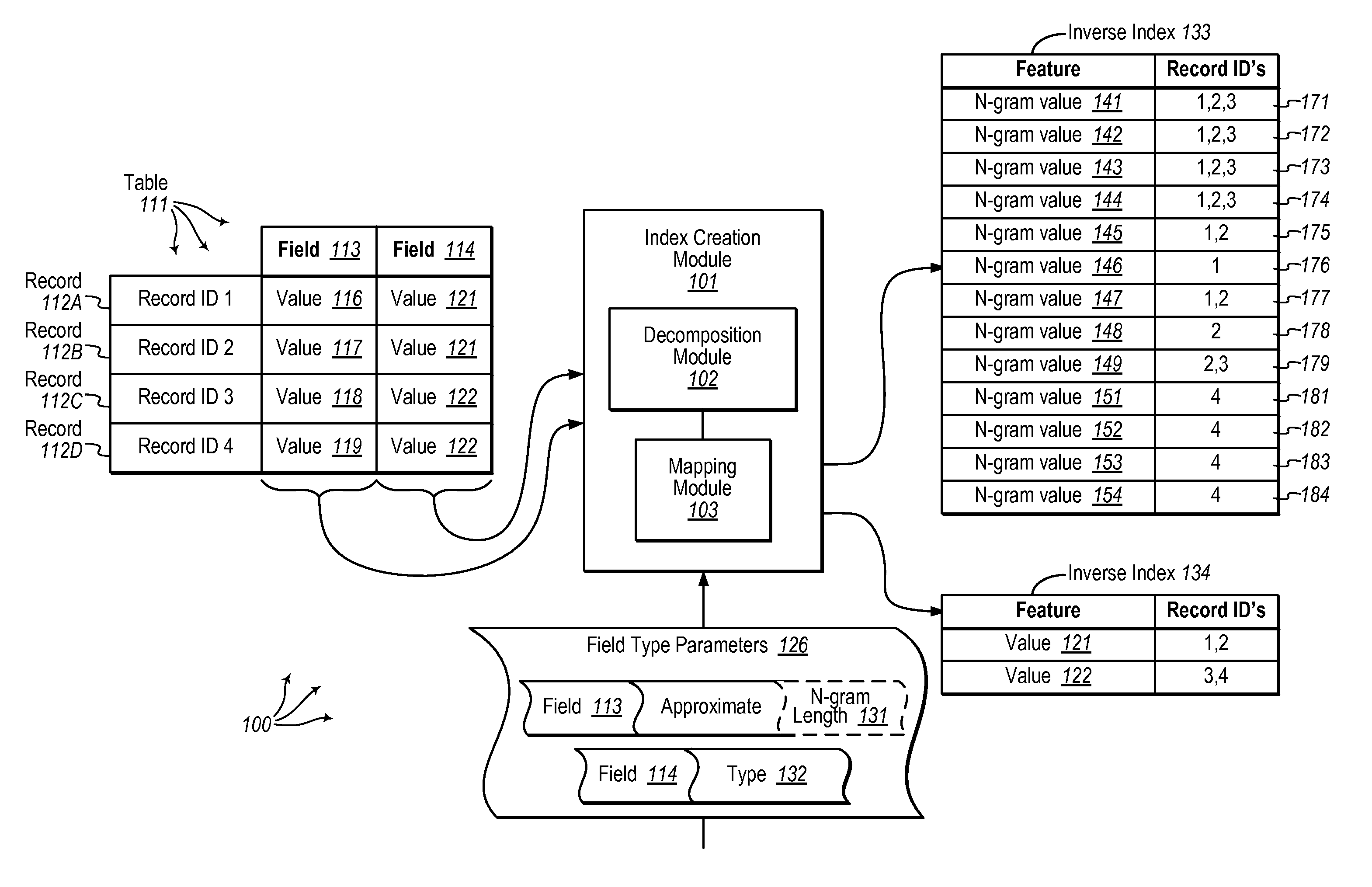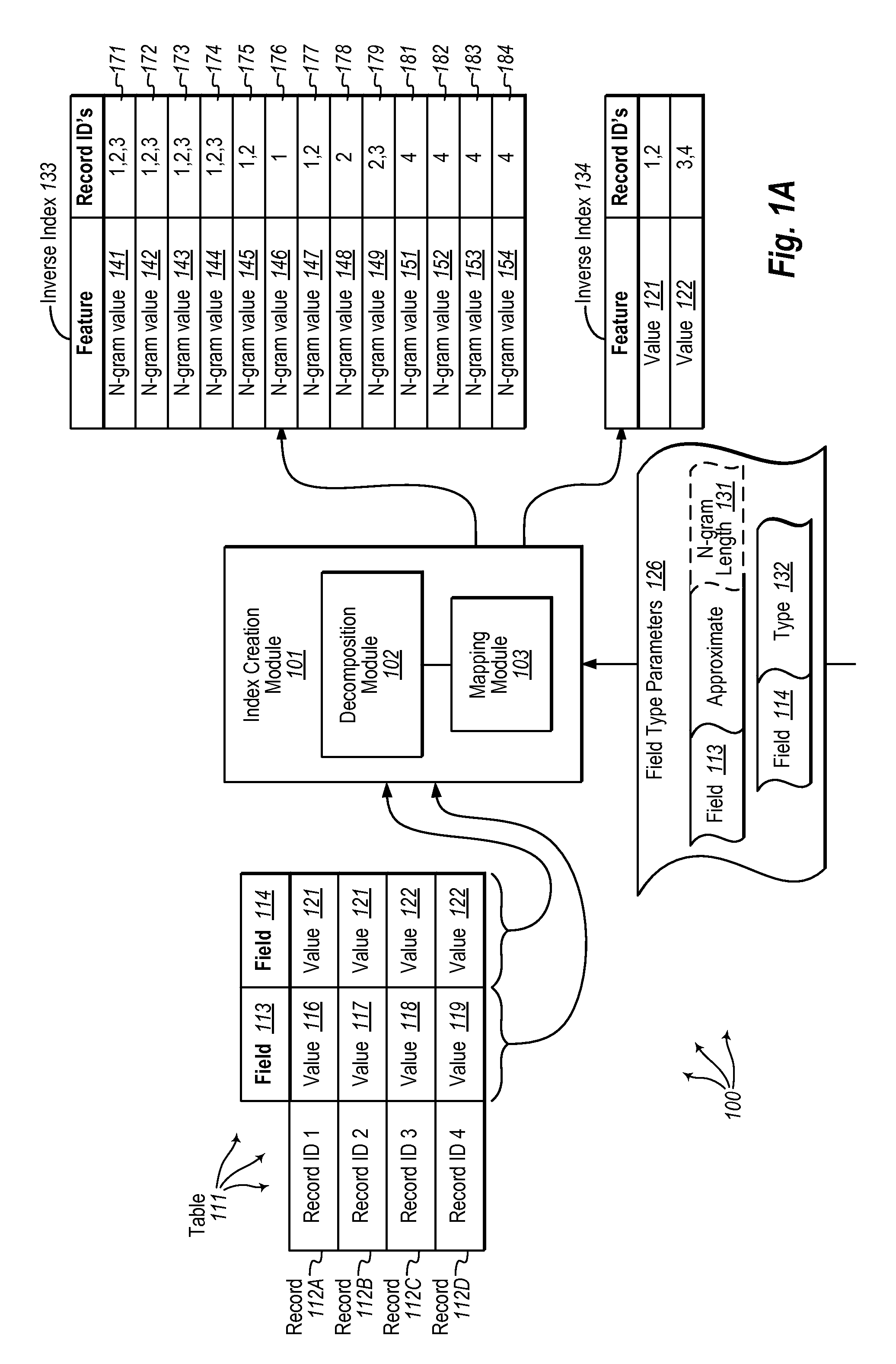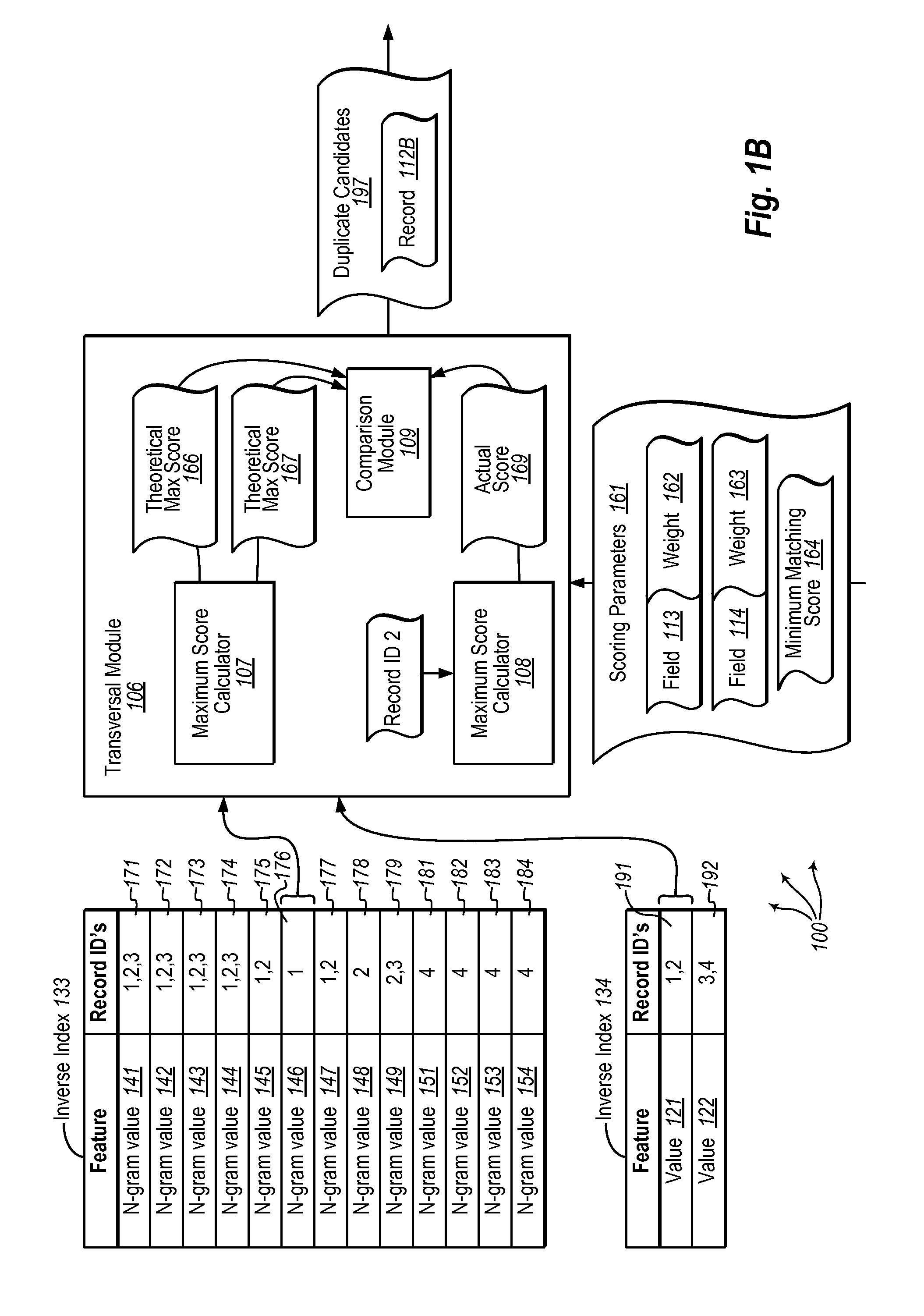Selecting candidate rows for deduplication
a technology of deduplication and candidate rows, applied in the field of deduplication candidate rows, can solve the problems of duplicate records, inefficient use of computer system resources, data format conversion,
- Summary
- Abstract
- Description
- Claims
- Application Information
AI Technical Summary
Benefits of technology
Problems solved by technology
Method used
Image
Examples
Embodiment Construction
[0023]Embodiments of the present invention extend to methods, systems, and computer program products for selecting candidate rows for deduplication from a table. A table is accessed. The table includes a plurality of records. Each record stores at least a field value for a field and an additional field value for an additional field.
[0024]An inverse index is created for the field. For each record, the field value is decomposed into a plurality of n-grams (e.g., bigrams, trigrams, etc.). For each of the plurality of n-grams, the n-gram is mapped to a record set identifying one or more records that contain the n-gram in their field value. An additional inverse index is created for the additional field. For each record, the additional field value is decomposed into one or more features (which may or may not be n-grams). For each of the one or more features, the feature is mapped to a record set identifying one or more records that contain the feature in their additional field value.
[002...
PUM
 Login to View More
Login to View More Abstract
Description
Claims
Application Information
 Login to View More
Login to View More - R&D
- Intellectual Property
- Life Sciences
- Materials
- Tech Scout
- Unparalleled Data Quality
- Higher Quality Content
- 60% Fewer Hallucinations
Browse by: Latest US Patents, China's latest patents, Technical Efficacy Thesaurus, Application Domain, Technology Topic, Popular Technical Reports.
© 2025 PatSnap. All rights reserved.Legal|Privacy policy|Modern Slavery Act Transparency Statement|Sitemap|About US| Contact US: help@patsnap.com



